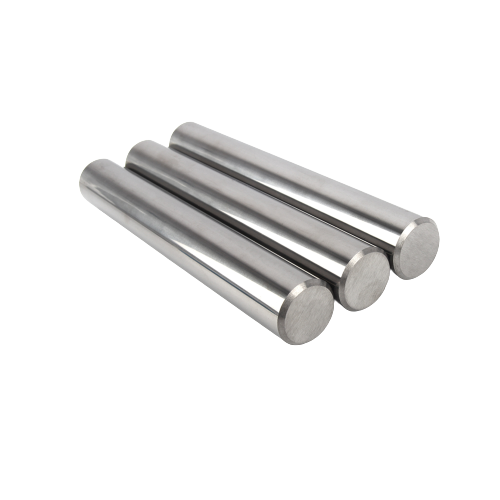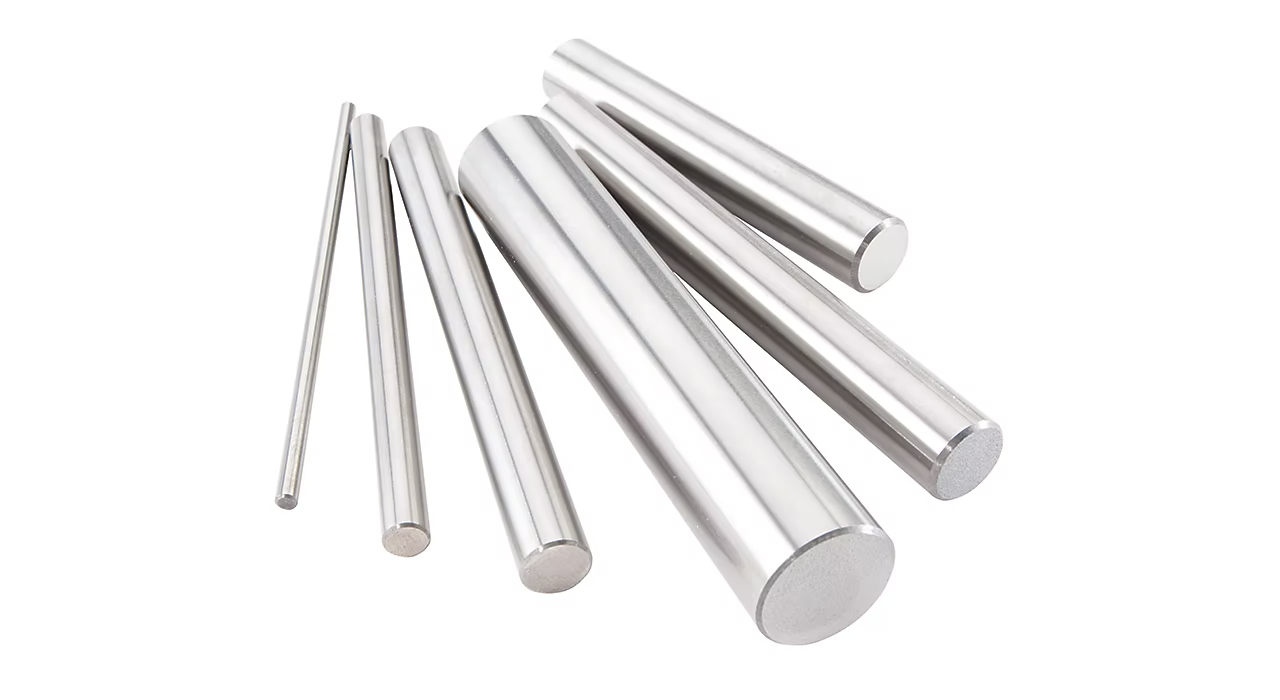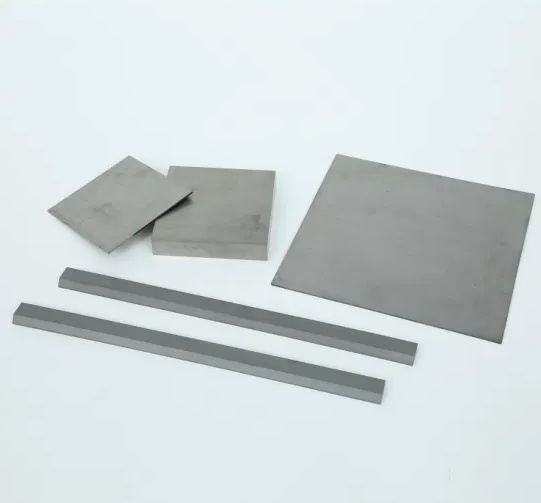Overview of Indexable Carbide Turning Inserts
Indexable carbide turning inserts are pivotal tools in the machining industry. These small but powerful components revolutionize metal cutting, offering versatility, efficiency, and precision. Whether you’re a seasoned machinist or just stepping into the world of metalworking, understanding these inserts can significantly enhance your machining capabilities.
What Are Indexable Carbide Turning Inserts?
At their core, indexable carbide turning inserts are cutting tools made from carbide material. These inserts can be indexed, meaning they can be rotated or flipped to use a fresh cutting edge, thus extending their lifespan. They come in various shapes, sizes, and grades, each designed for specific applications and materials.
Why Choose Indexable Carbide Turning Inserts?
- Efficiency: These inserts reduce downtime by eliminating the need for frequent tool changes.
- Cost-Effective: With multiple cutting edges, they offer better value over time.
- Precision: High accuracy in cutting leads to superior finishes.
- Versatility: Suitable for a range of materials from aluminum to hardened steel.

Types of Indexable Carbide Turning Inserts
| Insert Type | Description | Application |
|---|---|---|
| CNMG | Double-sided insert, versatile for roughing and finishing. | Steel, stainless steel, and cast iron. |
| DNMG | Diamond-shaped, ideal for profiling and finishing. | Hardened steels and superalloys. |
| TNMG | Triangular insert, strong cutting edges for heavy-duty cutting. | Roughing and medium turning. |
| VNMG | V-shaped insert, excellent for profiling and fine finishing. | Stainless steel and high-temperature alloys. |
| WNMG | Trigon-shaped, offers multiple cutting edges for efficient use. | General purpose turning, from roughing to finishing. |
| SNMG | Square insert, robust and suitable for heavy roughing. | Cast iron and non-ferrous materials. |
| CCGT | Positive rake, sharp edge for low cutting forces. | Aluminum and other non-ferrous metals. |
| SCMT | Square, single-sided, and strong insert for tough operations. | Steel and stainless steel. |
| TPGT | Positive rake, ideal for high-speed turning. | Soft materials like brass and aluminum. |
| RCGX | Round insert, ideal for high-feed turning and contouring. | Complex contours and high-feed rates. |
Applications of Indexable Carbide Turning Inserts
| Material | Suitable Insert Types | Application Description |
|---|---|---|
| Steel | CNMG, TNMG, SCMT | General turning, roughing, and finishing operations. |
| Stainless Steel | VNMG, DNMG, SCMT | Precision turning, profiling, and fine finishing. |
| Cast Iron | SNMG, CNMG, WNMG | Heavy-duty roughing and medium finishing. |
| Aluminum | CCGT, TPGT, RCGX | High-speed turning, low cutting force applications. |
| Superalloys | VNMG, DNMG, WNMG | High-precision turning, dealing with heat-resistant and tough materials. |
| Non-Ferrous Metals | CCGT, TPGT | Efficient turning with minimal tool wear. |
| Hardened Steel | DNMG, VNMG | Hard turning, maintaining precision and surface finish. |
Material Properties of Indexable Carbide Turning Inserts
| Property | Description |
|---|---|
| Hardness | Extremely hard, ensuring high wear resistance and long tool life. |
| Toughness | Capable of withstanding significant mechanical stress and impacts. |
| Heat Resistance | Maintains integrity and performance at high cutting temperatures. |
| Edge Sharpness | Precision-ground edges for accurate and smooth cutting. |
| Chemical Stability | Resistant to chemical reactions, reducing tool wear and oxidation. |
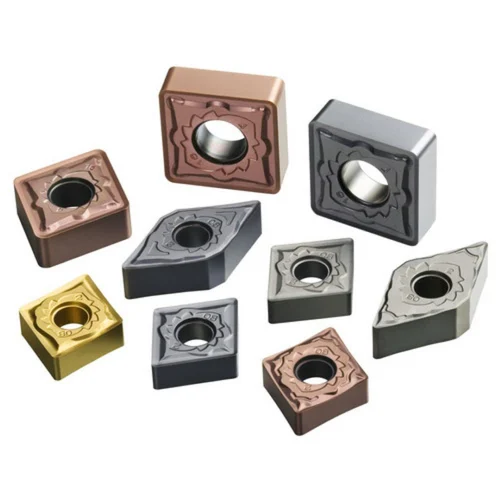
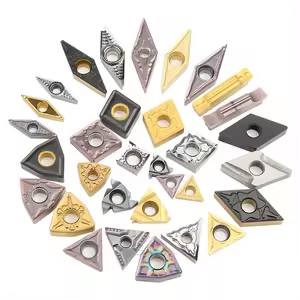
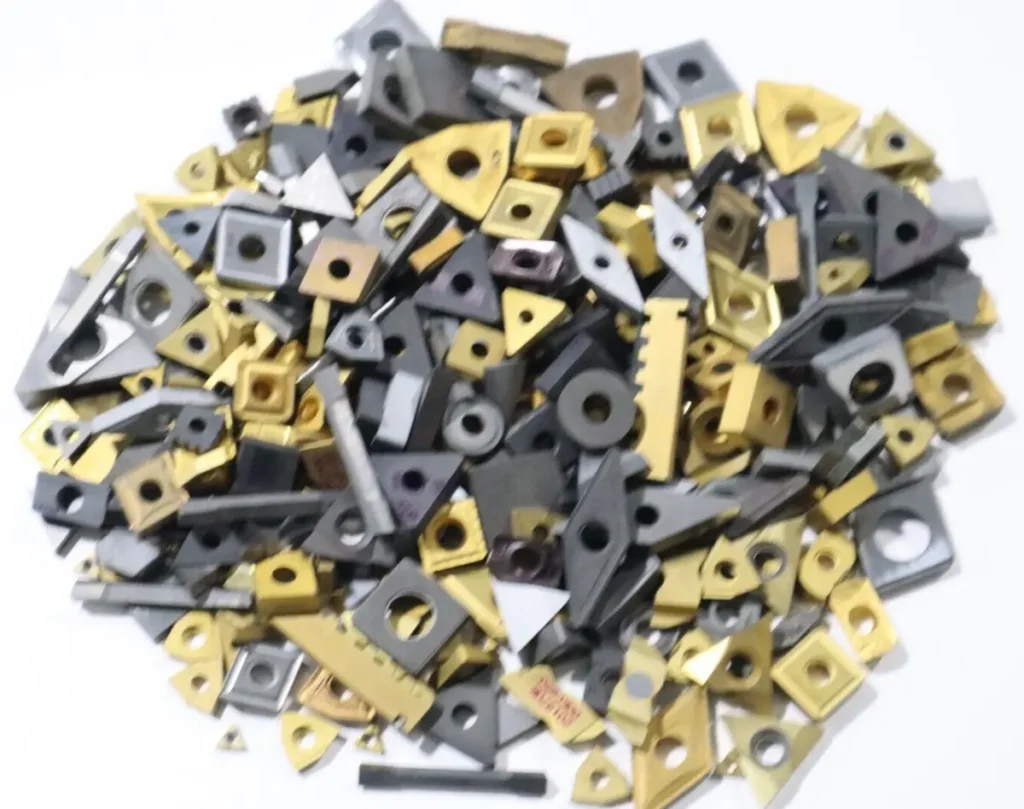


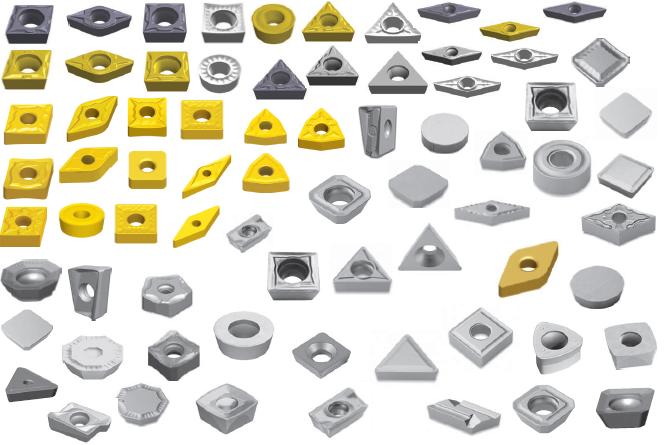
Composition, Properties, and Characteristics
| Material | Composition | Properties | Characteristics |
|---|---|---|---|
| Carbide | Tungsten Carbide + Cobalt Binder | High hardness, wear resistance | Suitable for various cutting conditions. |
| Ceramics | Aluminum Oxide + Silicon Carbide | Extremely hard, brittle | Ideal for high-speed cutting of hard materials. |
| Cermet | Ceramic + Metallic Binder | High-temperature stability | Excellent for finishing applications. |
| PCBN | Polycrystalline Cubic Boron Nitride | Extreme hardness, thermal stability | Used for hard turning applications. |
| Diamond | Pure Carbon Structure | Highest hardness, thermal conductivity | Best for non-ferrous metals and abrasive materials. |
Hardness, Strength, and Wear Resistance
| Insert Type | Hardness (HV) | Strength (MPa) | Wear Resistance |
|---|---|---|---|
| Carbide | 1500-2000 | 1500-2500 | High |
| Ceramic | 1800-2400 | 500-800 | Very High |
| Cermet | 1400-1600 | 1200-2000 | High |
| PCBN | 3000-4000 | 600-900 | Extreme |
| Diamond | 8000-10000 | 900-1200 | Ultimate |
Specifications, Sizes, Shapes, and Standards
| Specification | Sizes | Shapes | Standards |
|---|---|---|---|
| ISO | 04, 08, 12, 16, 20 | Triangle, Square, Round | ISO 1832 |
| ANSI | 1/4″, 3/8″, 1/2″ | Diamond, Trigon, Rectangle | ANSI B212.4 |
| JIS | 6mm, 8mm, 10mm | V-Shaped, Octagon | JIS B 4051 |
| DIN | 4mm, 6mm, 12mm | Hexagon, Pentagonal | DIN 4982 |
| Custom | Varies | Custom shapes available | Custom standards |
Suppliers and Pricing Details
| Supplier | Insert Type | Price Range | Additional Features |
|---|---|---|---|
| Sandvik | All types | $5 – $25 per insert | Wide range, high quality, reliable. |
| Kennametal | All types | $4 – $22 per insert | Innovative designs, durable. |
| ISCAR | All types | $6 – $28 per insert | Advanced technology, efficient performance. |
| Kyocera | All types | $5 – $20 per insert | Cost-effective, versatile. |
| Sumitomo | All types | $7 – $30 per insert | High precision, excellent finish. |
How to Select the Right Indexable Carbide Turning Inserts
| Criteria | Considerations |
|---|---|
| Material | Match insert material to workpiece material for optimal results. |
| Operation Type | Choose based on roughing, finishing, or profiling needs. |
| Machine Capability | Ensure the insert is compatible with your machine’s power and speed. |
| Cutting Speed | Select inserts that can handle the desired cutting speed. |
| Cost | Balance between initial cost and long-term value. |
Advantages and Limitations
| Advantage | Limitation |
|---|---|
| High precision and excellent finish | Initial cost can be high. |
| Multiple cutting edges | Requires proper handling and setup. |
| Durable and long-lasting | Not all inserts are suitable for all materials. |
| Versatile for various applications | Specific inserts needed for specific tasks. |
Detailed Descriptions of Specific Metal Powder Models
- CNMG 432
- Description: Double-sided with 80-degree cutting edge.
- Application: General turning, both roughing and finishing.
- Material Compatibility: Steel, stainless steel, and cast iron.
- DNMG 441
- Description: Diamond-shaped, perfect for fine finishing.
- Application: Precision turning and profiling.
- Material Compatibility: Hardened steels and superalloys.
- TNMG 160408
- Description: Triangular insert with robust edges.
- Application: Heavy-duty roughing. Material Compatibility: Various steels and cast irons.
- VNMG 160404
- Description: V-shaped insert for intricate profiling.
- Application: Fine finishing.
- Material Compatibility: Stainless steel and high-temperature alloys.
- WNMG 080408
- Description: Trigon shape with multiple edges.
- Application: Versatile, from roughing to finishing.
- Material Compatibility: General purpose.
- SNMG 120408
- Description: Square insert with strong edges.
- Application: Heavy-duty turning.
- Material Compatibility: Cast iron and non-ferrous materials.
- CCGT 09T308
- Description: Positive rake with sharp edge.
- Application: High-speed turning.
- Material Compatibility: Aluminum and non-ferrous metals.
- SCMT 120408
- Description: Square and single-sided.
- Application: Tough operations.
- Material Compatibility: Steel and stainless steel.
- TPGT 110308
- Description: Positive rake for smooth cutting.
- Application: High-speed, precision turning.
- Material Compatibility: Soft materials like brass and aluminum.
- RCGX 120700
- Description: Round insert for high-feed turning.
- Application: Complex contours and high-feed rates.
- Material Compatibility: Various metals, especially for contouring.

FAQ
| Question | Answer |
|---|---|
| What are indexable carbide turning inserts? | These are cutting tools made from carbide material, designed to be rotated or indexed to use fresh cutting edges, extending their lifespan and efficiency. |
| Why use carbide inserts over traditional tools? | Carbide inserts offer multiple cutting edges, high precision, longer tool life, and versatility in various applications, making them cost-effective and efficient. |
| How to choose the right carbide insert? | Consider the material to be machined, the type of operation (roughing, finishing), machine capabilities, desired cutting speed, and overall cost efficiency. |
| What materials can be machined with carbide inserts? | Carbide inserts can machine a wide range of materials including steel, stainless steel, cast iron, aluminum, superalloys, and non-ferrous metals. |
| How do I ensure the longevity of my inserts? | Proper handling, correct setup, using the right insert for the right material and operation, and maintaining optimal cutting conditions can ensure longer tool life. |
| Where can I buy quality carbide inserts? | Reputable suppliers like Sandvik, Kennametal, ISCAR, Kyocera, and Sumitomo offer a wide range of high-quality carbide inserts suitable for various applications. |
Conclusion
Indexable carbide turning inserts are integral to modern machining, offering unparalleled efficiency, precision, and versatility. Understanding the different types, their applications, and how to select the right insert for your needs can dramatically enhance your machining operations. Whether you’re dealing with steel, aluminum, or superalloys, there’s an indexable carbide turning insert tailored to your needs. Invest in the right tools, and watch your machining efficiency soar!

